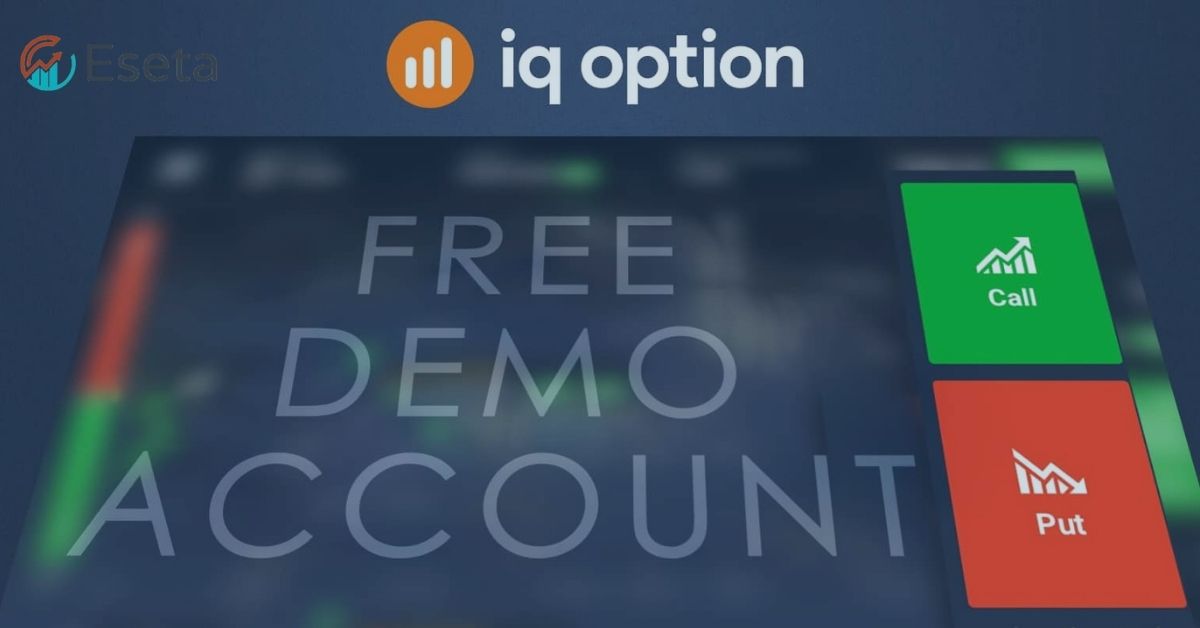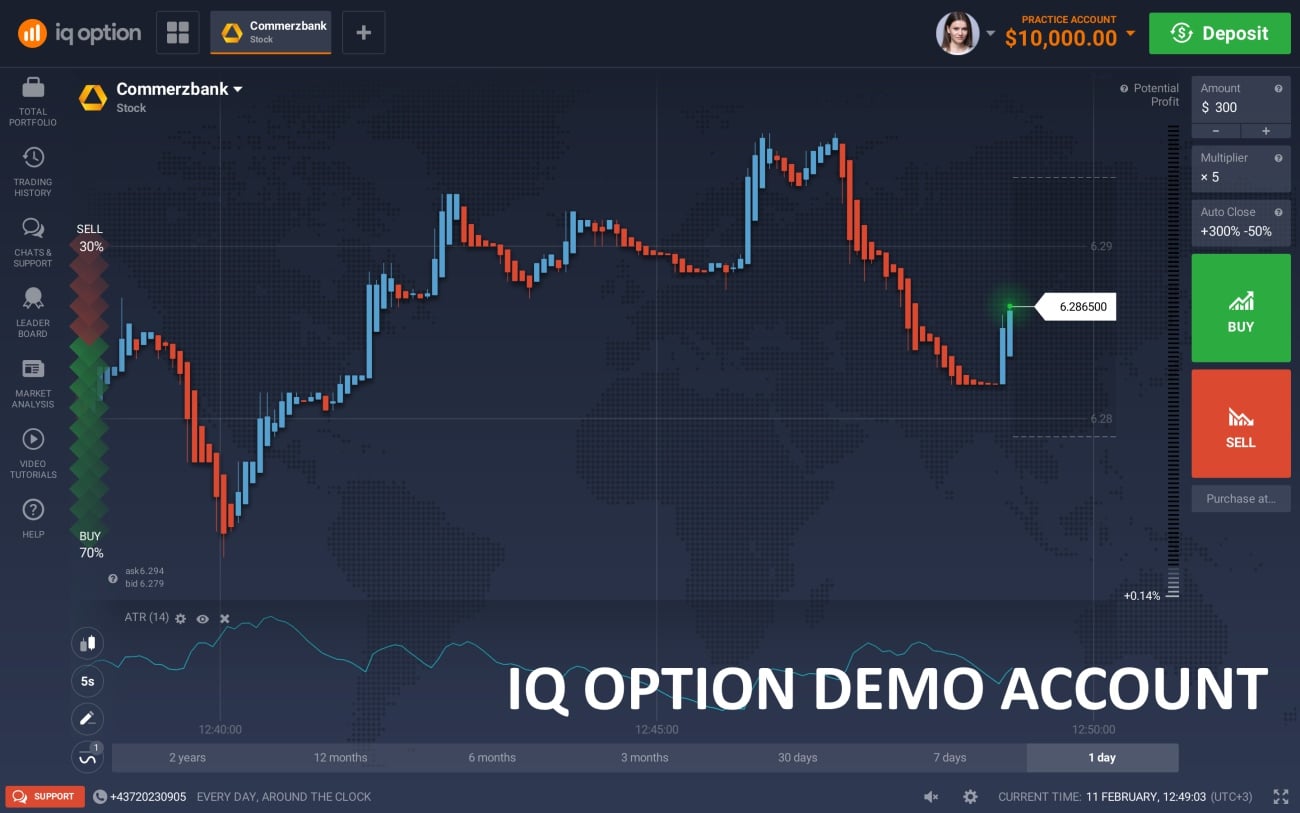IQ Option Tricks and Strategy
In IQ Option, traders have to pick between two payoff options, and after the duration of the trade, you receive a fixed amount or nothing at all. As simple as it sounds, users need to understand how the binary options in IQ Option work and what strategy they should apply to earn profit.
Here in this article, we'll teach traders different strategies, tools, and many more about IQ Option, and how they can yield positive returns.
In our article IQ Option Broker Review, we have covered basic topics about IQ Option like deposits, withdrawals, verification etc., but to make sure you become a good trader, you need to learn some tricks and strategies which are mentioned below:
6 Different IQ Option Strategies

Skilled traders apply specific strategies that increase the probability of returns from their investments. Numerous trading strategies have helped users in their trading journey, while others have shown lackluster performance.
Keeping this in mind, here are six of the best and most popular trading strategies you should know and try out:
#1. Momentum Trading
When traders wait for the asset to demonstrate rapid movement and open the deal, it's known as momentum trading. The move can happen in either direction, as users can start a trade for long and short positions. It's a simple technique to understand but hard to implement while your assets are on the line.
Technical and fundamental factors play a massive role in triggering these rapid movements. Therefore, traders should keep a close eye on them. For instance, in the case of publicly traded companies, earning reports, major news, and other types of events, stock prices can change drastically.
#2. Pullback Trading Strategy
In this strategy, traders find an asset, like company stock that has established a positive trend, and wait for it to move in the opposite direction.
This tactic is applicable for short-lived retracements in the market and not an emerging negative trend. You can also consider opening a long position when the retracement lessens, and the price rises again.
Traders can apply the same strategy when stocks are facing a negative trend. They should wait for these assets to show restricted upward movement. After that, users can consider opening a short position when the price is most elevated.
#3. Scalping Strategy
While using the scalping strategy, traders set buy and sell thresholds before opening a deal, which causes the price of the asset to move in the desired direction. In this strategy, the trading process is quick and lasts only a few seconds.
In other words, scalpers need to act quickly and make crucial trading decisions within a few seconds. There is no time for fundamental analysis in scalping due to short timeframes.
#4. Breakout Trading
A breakout occurs when the price moves beyond a certain level. Here, you enter the market when the momentum is in your favor. Usually, when asset price achieves a particular threshold, it'll begin to fall back down to the lower levels.
However, when the asset goes beyond a certain resistance level, it's expected to continue its upward rally. But remember that the asset price can move above and below the resistance level freely, making it hard for traders to execute this strategy.
#5. News Trading
Major news and events have a massive impact on the world of trading. Almost every asset, including stocks, cryptocurrency, commodities, and national currency, can have significant price changes due to an economic or political event.
For instance, positive news tends to move the asset price higher. Likewise, negative information drags the price down. Although it sounds simple, predicting the news and making the correct forecast is hard. Sometimes markets behave illogically, and good news may also trigger a price decrease. Therefore, traders must be prepared for anything coming their way.
#6. Swing Trading
A swing trader focuses on a trade that lasts around 5 to 10 days while looking for profits. The trader focuses on getting smaller gains in short-term trends in swing trading and cutting losses quicker. With this strategy, you can make a lot of small wins, which eventually will add up to massive overall returns.
However, this strategy can still deliver significant financial gains on individual trades conducted over a day. Remember, a stock may show enough initial strength to hold for huge profits. In other cases, you can keep taking partial profits until your position is completely closed out.
IQ Option Tricks: How to Win?

IQ Option states that up to 90% of active accounts lose their money. Even though these traders may make winning trades once in a while, they don't make enough to offset losses.
The main reason behind this is inconsistency. Users may know different trading strategies, but switching often leads to inconsistent results. Consequently, it's necessary to set some ground rules before trading. Here are some tips and tricks you should apply while investing in IQ Option:
1. Risk Management
Risk Management is a crucial concept that all traders should understand and apply while buying and selling stocks. Unfortunately, many people often overlook this topic and dismiss it as unimportant. However, inefficient risk management and lack of discipline while trading can lead to losses and even bankruptcy among traders.
Trading large sums of money at once, thinking that it'll lead to profit, is similar to gambling. But in reality, trading has nothing to do with the game of chances. Therefore, risk management can assist you and increase the productivity of your trading journey.
It's always better to invest a thoroughly calculated amount while trading because it can pay off in the long run. For example, professional traders have widely accepted that the optimum amount of money invested in a deal shouldn't exceed 2% of your capital.
Why do Traders Prefer to Use the 2 Percent Rule in IQ Option?
Traders think that having 2% is good enough for consistent trading and gives enough flexibility to survive a losing streak while trading. To explain, let's compare the amount of money you lose after investing 10% of your income instead of the recommended 2%.
# of the deal2%10%
010,00010,000
19,8009,000
29,6048,100
39,4117,290
49,2236,561
59,0395,904
As you can see, while investing 2% of the capital, your losses might reach around 10% of the invested capital. On the other hand, you might lose over 40% of your investments only after five unsuccessful trades. Therefore, it's necessary to avoid getting carried away with your money, no matter how good you are at your best.
Knowing how to handle your losses is as crucial for a successful trader as opening a deal in the right direction. No matter what type of trading strategy you use, you'll occasionally have to face a losing streak.
As a trader, you shouldn't play a game of high stakes. Instead, focus on getting a series of small wins, each of them getting you closer to your financial goals.
2. Position Size and Stop Loss
Traders should develop a proper method and strategy for determining the size of a trade instead of randomly selecting a position and hoping for the best.
But before determining a position size, a trader must first decide an appropriate stop loss for a specific trade. To clarify, a stop loss is a pre-determined level of loss. If it reaches that point, IQ Option will close the position automatically.
For instance, a trader should set their stop loss at 1% to 3% of their account on a trade to avoid losing more money. Use well-planned calculations to decide how much loss you can handle. And then set the stop loss and position size before trading. All in all, setting up a position size will help users to avoid unnecessary losses.
3. Test Strategies in Demo Account
Traders can use two different types of accounts on IQ Option. The first one is the real account, where they need to deposit real money to trade assets, and secondly, you have a demo account. The demo account platform provides their users with 10,000 USD of free practice money to learn the basics of IQ Option.
Additionally, the charts on the demo and real accounts are identical, which means you can make or execute strategies on the dummy money before investing real funds.
How to Make a Demo Account in IQ Option?

To make a demo account, you need to follow these steps:
- Visit the IQ Option website or application.
- Click on the sign-up button on the home page.
- Fill in the required details about yourself.
- Press the 'open the account for 'free.'
- Click on the confirmation link in the email.
- Sign in on your demo account.
But, if you have an existing real account, you don't need to create a new one. It's because the demo or practice account is already a part of the current account.
Above that, users can switch between the real account and the demo account by moving the cursor towards 'balance' and choosing a different account. Once you've changed the account balance, you'll see a confirmation 'Account type has changed.'
Traders can use the money in the demo account however they want to, but they'll need to refill the balance in the real account if they run out of real money.
How to Refill the Demo Account?

Users need to stay on the demo account and click on the deposit button to refill their balance on the account. It's quick, and there isn't any limit on the number of refills on the account.
In other words, users don't need to worry about losing their dummy money, and they're free to use it as they please. If users face any issues with the demo account, they can contact the support team. Also, it's impossible to withdraw money from this account, nor can you transfer the dummy money to a real account.
Regardless, traders can use trading strategies or create their own without facing any risk of losing money while using the demo account. They can also study and practice other aspects like risk management and how to use tools without using their actual money.
Choosing the Right Tools
IQ Option provides its users with trading tools to assist them in analyzing charts by tweaking the trade room to their tastes. Using these tools efficiently will make your trading routine more organized and help you understand trading better. Here are some tools to help you implement your strategy in IQ Option:
1. Chart Types
Users can pick from four different charts on the IQ Option platform. The linear chart is the default option, and it displays changes in one line. However, it doesn't show detailed information like the opening, closing, high, and low prices.
On the other hand, candles and bars display more information about the price of assets over time. Heikin-Ashi serves as both a chart type and an indicator. It shows a smoother version of the price sequence and helps a trader determine the trend direction better.
These chart types prove beneficial by tracking price changes for a certain period. Users can choose one depending on the information they want to decode.
2. Indicators
Experienced traders use indicators for better technical analysis of the changes in stock prices. While there is no way to predict market movements with a 100% guarantee, these technical indicators evaluate the performance of the market to decide on the possible outcome.
To implement technical analysis in your trading, go to the indicators from the popular section. Traders tend to use multiple tools, as the signals can sometimes be false. But, it's better to begin with 2-3 trend indicators and combine them with oscillators.
3. Graphical Tools
Users can use graphical tools to understand the graph charts better and gain knowledge about the market. Presently, it's possible to use a simple line, trend line, horizontal or vertical line, and Fibonacci retracements.
Traders use graphical tools to set the support and resistance levels, mark breakouts, or draw chart patterns. It allows you to be more creative and transfer ideas to the screen, and if something goes wrong, delete them and start on a new page.
4. Trading Signals
Trading signals are the information received from technical analysis tools. They can help a trader make a correct forecast and perform a successful trade at the right time.
Using indicators signals the direction in which the price is trending, creating entry and exit signals. These help traders know the period of when they should invest in these assets. It's advised to use multiple indicators and patterns to get more accurate information.
Remember that these signals don't guarantee profit to a trader, but they significantly increase the chances of a successful trade.
Conclusion
All in all, remember, no trading strategy is superior to another. To become a successful trader, you have to be consistent in selecting the appropriate strategy and applying it to the right markets.
It's always better to focus on one strategy or financial instrument and find what makes money in a specific market. As such, you'll be confident each time you enter any trades.
